Balaka Ghosal writes about Ganga Narayan Ghosh, a mechanical engineer by qualification who has designed some unique bins to tackle the problem of waste management in India in an organised way. This article was originally published at: www.thebetterindia.com
Mr. Ganga Narayan Ghosh, at 87, is one of those rare Indians who still live their lives with complete righteousness. Leaving a glorious professional life as a mechanical engineer in the corporate sector and in a successful engineering business, Mr. Ghosh decided to dedicate his life to social work when he turned 49. “I simply wish to see a clean and healthy India.”
Besides other social services, he spent a lot of time researching and came up with designs for ideal bins that can meet India’s waste management needs.
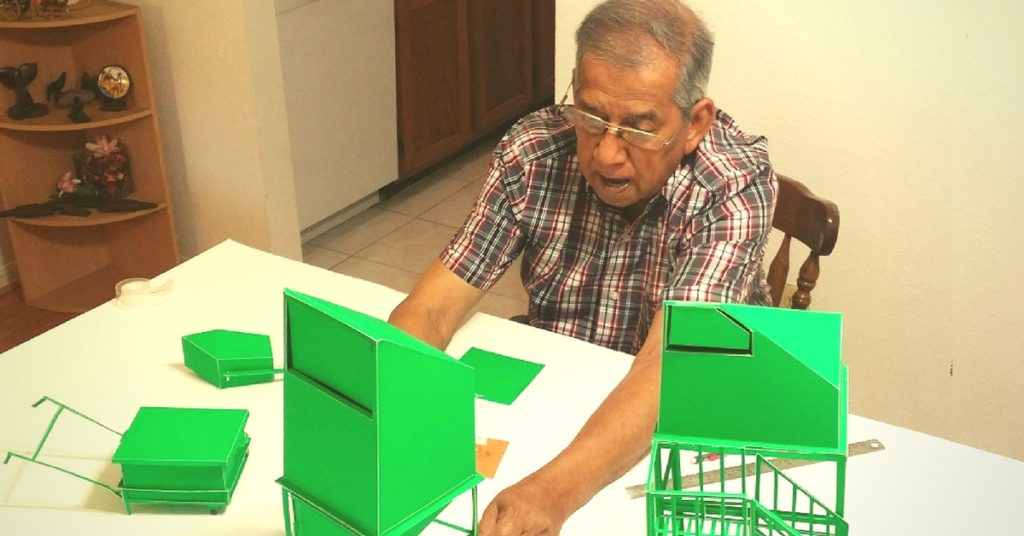
Garbage content in India is different from that in western countries. He realized that simply copying the machines used in the west will not solve the problem. He visited 192 cities in India and 80 cities of six continents to explore other systems and finally designed three unique bins. Any tourist visiting India wonders about the filth that is strewn all around. Mr. Ghosh chose to work with garbage because it affects public health in a huge way. Besides looking dirty, strewn garbage clogs drains and leads to floods. Open heaps of rotting garbage secretes leachate, which gets washed away with the rain and contaminates surface water and eventually groundwater. Garbage piles also release methane, which happens to be a highly inflammable greenhouse gas.
Though he has been living in America due to certain circumstances for the last 16 years, Mr. Ghosh continues to travel to India every year to create a network of committed people. His patented designs for bins are unique in three different ways. Every bin is covered, which prevents birds and animals from grabbing the waste content inside. Each bin is elevated so the bottom does not get submerged in water and is not corroded. The third and perhaps most unique feature is that the bottom portion of every bin is sloping. The slope creates an ‘angle of slide’ that helps in emptying waste once the front hatch is opened. The garbage automatically comes out of the opening due to gravity.
Specially designed handcarts or regular open-top trucks can be strategically placed in front of the bins to collect waste. This is a huge relief for garbage handlers. They hardly have to touch anything. It is impossible to empty out a flat-bottomed bin with moist content in this way. Even the top surface of each bin is has a slope so rain water cannot accumulate and corrode it. People also cannot leave bags of trash on it. “The opening through which garbage is pushed inside by the users will allow the material to fall downward in a heap. Cubic bins can never fill up all the way to the top anyway,” says Mr. Ghosh.
These bins come in three sizes. The small bin is perched on a pole with a swivel.
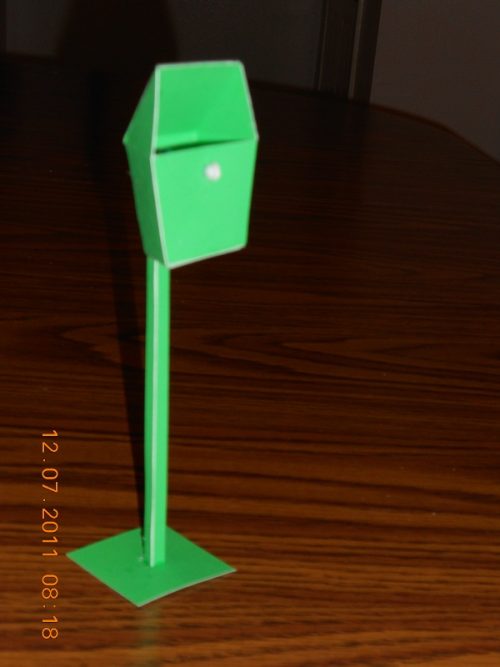
Emptying waste from it is very easy. One just has to place the handcart underneath and turn the bin on its swivel for the entire content to slide out. Once released, the bin springs back to its original upright position. These can be used at bus stops, railway stations, parks, and footpaths.
A mid-sized bin is ideal for small communities, housing complexes, markets and schools.
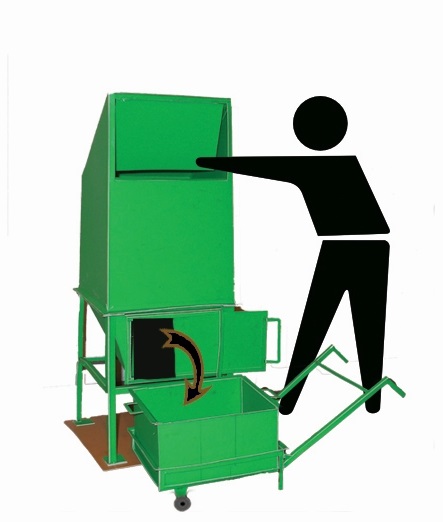
The base stands are firmly set in the ground to prevent theft. The handcart, too, is unique because the container is detachable from the wheel-base. This makes it possible for garbage handlers to lift it to a truck and flip it empty.
A large-sized bin comes with a staircase. It is specially designed to load contents onto a truck.
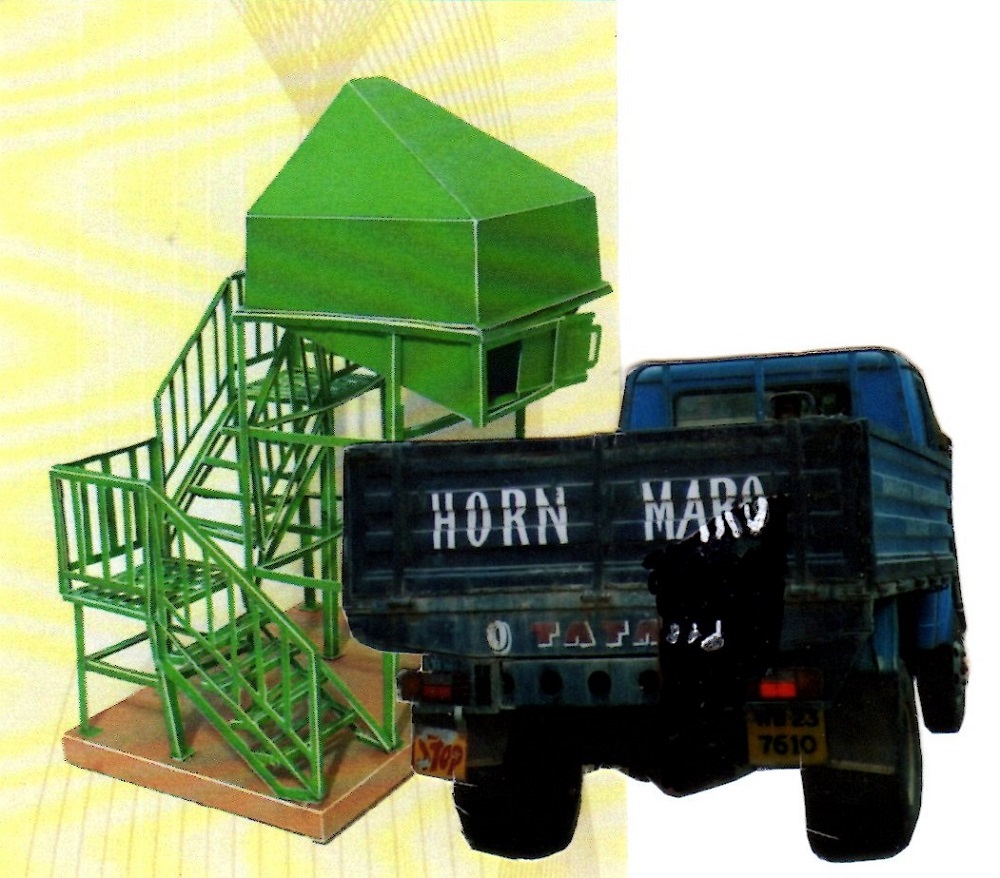
With a slope at the bottom, the contents can easily slide in open trucks. We are still practising the conventional ways of garbage collection in India — cartloads of trash are brought to a truck, the waste is turned over on the road and then shovelled into cane baskets to be carried up to the truck. This method needs to be stopped for the sake of efficiency as well as to protect the health of garbage handlers. These large-size bins are ideal for large markets or big housing complexes of about 300 families.
All bins are made of steel to keep the price competitive. The swivel-emptying bin on a stand-alone pole cost only Rs. 1,200 – Rs. 1,500. The estimated price for the mid-sized bin is a reasonable Rs. 10,000 – Rs. 12,000. The large bins cost about Rs. 50,000 – Rs. 55,000. The hand-cart with removable basket costs Rs. 3,000 – Rs. 4,000. Originally, all of these items were fabricated under Mr. Ghosh’s supervision and training manuals by a group of trainee welders at the Ramakrishna Vivekananda Mission in Barrackpore. However, this training unit is no longer functional.
The bin designs are so well-drawn and explained that any interested fabricator should be able to manufacture them.
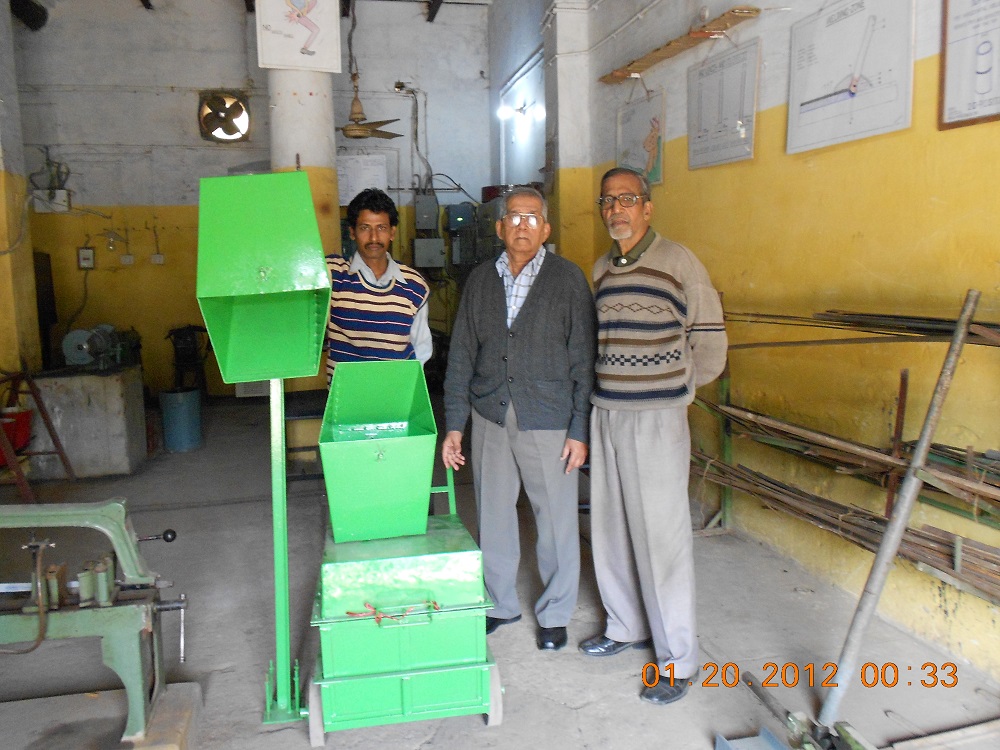
Currently, the mid-sized bins are being manufactured on demand by Triveni Industries in Mumbai. Owner Manohar Panchal can be contacted through Mr. Keith Mascarhenas at keithmas@hotmail.com. In Kolkata, GSB Toolcrafts is also making them – the proprietor Mr. Devadidev Banerjee may be contacted at devadidev@hotmail.com. Mr. Ghosh is waiting for more manufacturers and builders to come forward to make these bins for the new apartment complexes that are springing up. He will be so happy to share the designs without any financial interest.
Anyone interested is most welcome to contact Mr. Ghosh at gnghosh@aol.com. He believes that large scale production will lead to employment generation. He has written elaborate training booklets for welders and is currently writing his book on India’s garbage issue as well. He has also started a Facebook page named Garbage Solutions to spread awareness.
Each of these three bins has been donated to various organizations. All three of them are in use at the Thakurpukur Cancer Research Centre, Kolkata. The mid-size bins are being used by Ramakrishna Belur Math near Kolkata and the Ramakrishna Mission in Mumbai, besides many other institutes.
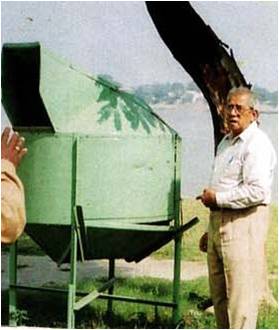
Mr. Ghosh with his previous model of the midsize bin. It is made of fibre glass and is still used at Ramakrishna Belur Math, West Bengal.
Mr. Ganga Ghosh is also designing toilets for rural and semi-urban areas. He is highly concerned about this hurried toilet construction all over India. “Simply installing toilets is not going to be a long-term solution. Installing toilets without adequate septic tanks or a plan for the responsible disposal of their contents will lead to serious groundwater contamination,” he says.
– Balaka Ghosal







0 Comments